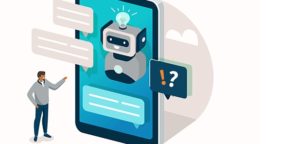
Teaching English as a Second Language (ESL) has evolved significantly with the availability of innovative tools like ESL Brains. ESL Brains offers thoughtfully designed lesson plans that prioritize practical language use, critical thinking, and real-world scenarios. These plans are tailored to engage learners at all levels, making the learning experience interactive, meaningful, and effective.
By focusing on intellectual growth and practical communication, ESL Brains has become a valuable resource for educators looking to enhance their teaching methods and for students aiming to master English in a practical context.
The Role of ESL Lesson Plans in Language Mastery
ESL lesson plans are the foundation of any successful language learning program. They provide a structured approach that guides both teachers and learners toward achieving their goals. ESL Brains takes lesson planning to a new level by combining creative activities with real-life applications, ensuring lessons remain relevant and engaging.
These lesson plans are not just about rote learning; they are designed to improve grammar, vocabulary, and communication skills through interactive and immersive methods. This makes them particularly effective in building both language proficiency and confidence.
Features That Set ESL Brains Apart
The unique approach of ESL Brains lies in its carefully curated lesson plans. These plans include a variety of features designed to make learning English dynamic and enjoyable.
One of the key elements is the integration of real-world scenarios. By simulating situations like workplace communication, travel interactions, and social conversations, students can practice and apply their language skills in a practical context. This helps bridge the gap between theoretical knowledge and actual usage.
Another feature is the emphasis on critical thinking. Activities such as debates, problem-solving tasks, and collaborative projects encourage learners to analyze and discuss, fostering deeper engagement with the language.
The use of multimedia resources, including videos, articles, and interactive visuals, adds another layer of engagement, making lessons appealing and accessible for different learning styles.
Real-World Scenarios for Practical Learning
ESL Brains excels at preparing students for real-world communication. Its lesson plans are designed around everyday scenarios, helping learners develop functional language skills that they can immediately use in real life.
For example, a lesson may involve role-playing a shopping experience where students practice asking questions and making purchases. Another might simulate a workplace meeting, teaching professional vocabulary and phrases. These practical exercises help learners build confidence and fluency in English.
Engaging Activities for All Proficiency Levels
One of the strengths of esl lesson plans is its ability to cater to learners of all levels. Each lesson plan is thoughtfully designed to meet the needs of different proficiency levels, ensuring that every student can benefit.
For beginners, lessons focus on foundational skills such as basic grammar and vocabulary. Activities are simple yet engaging, like matching exercises or short dialogues that build essential language abilities.
Intermediate learners can explore more complex tasks such as storytelling, group discussions, and role-playing. These activities encourage the use of complete sentences and expand vocabulary, improving fluency.
Advanced learners are challenged with analytical tasks like debates, case studies, and problem-solving projects. These lessons help refine conversational skills and enable students to articulate their thoughts on complex topics.
Benefits for Educators and Learners
ESL Brains provides significant advantages for both teachers and students. For educators, the ready-made lesson plans reduce preparation time and effort while maintaining high quality. Teachers can focus on delivering engaging lessons without the stress of creating materials from scratch.
For learners, ESL Brains offers a well-rounded and interactive approach to language learning. The activities are designed to make learning enjoyable while also addressing critical aspects of language development. By focusing on real-world scenarios and critical thinking, learners develop practical communication skills and the confidence to use English effectively.
Adapting ESL Brains to Different Teaching Environments
The flexibility of ESL Brains makes it suitable for a variety of teaching environments. In traditional classrooms, the structured plans encourage active participation and group interaction. For online teaching, multimedia resources make lessons engaging and interactive, even in a virtual setting.
Individual tutoring sessions also benefit from the adaptability of ESL Brains. Teachers can customize lesson plans to address the specific goals and challenges of their students. This personalized approach ensures that each learner gets the most out of their language learning journey.
Conclusion: The Impact of ESL Brains on Language Learning
ESL Brains has redefined the way English is taught and learned. By integrating creativity, practicality, and intellectual growth, it empowers educators to deliver impactful lessons and equips students with the skills they need to succeed in real-world communication.
With its innovative lesson plans, ESL Brains bridges the gap between theory and application, making language learning a rewarding experience. Whether you are an educator seeking to enhance your teaching methods or a learner striving for fluency, ESL Brains is a resource that delivers exceptional results. Through its thoughtful design and focus on engagement, it ensures that learning English is not only effective but also enjoyable.








